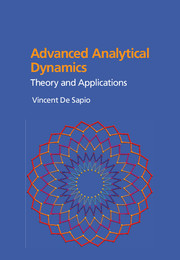Book contents
- Frontmatter
- Contents
- List of Illustrations
- List of Tables
- Preface
- Notation
- 1 Introduction
- 2 Mathematical Preliminaries
- 3 Kinematics of Discrete Systems
- 4 Conservation Principles
- 5 Zeroth-Order Variational Principles
- 6 First-Order Variational Principles
- 7 Second-Order Variational Principles
- 8 Dynamics in Task Space
- 9 Applications to Biomechanical Systems
- 10 Software for Analytical Dynamics
- Appendix Inclusion of Flexible Bodies
- References
- Index
4 - Conservation Principles
Published online by Cambridge University Press: 02 February 2017
- Frontmatter
- Contents
- List of Illustrations
- List of Tables
- Preface
- Notation
- 1 Introduction
- 2 Mathematical Preliminaries
- 3 Kinematics of Discrete Systems
- 4 Conservation Principles
- 5 Zeroth-Order Variational Principles
- 6 First-Order Variational Principles
- 7 Second-Order Variational Principles
- 8 Dynamics in Task Space
- 9 Applications to Biomechanical Systems
- 10 Software for Analytical Dynamics
- Appendix Inclusion of Flexible Bodies
- References
- Index
Summary
The traditional starting point in the classical study of mechanics is with the so-called conservation principles. Newton's famous laws of motion form the basis of classical mechanics. We can consider Newton's second law as part of a more general conservation principle; specifically the conservation of translational momentum.
In this chapter we will begin with Newton's laws, which address point masses, and generalize to extended bodies (rigid bodies) using Euler's extension of Newton's laws. In both cases, point masses and rigid bodies, conservation of momentum plays the central role. We will articulate the Newton-Euler Principle as the basis for deriving the equations of motion for both a single rigid body and for systems of interconnected rigid bodies (i.e., kinematic chains). As we apply the conservation of translational and angular momentum to a single rigid body, we will define a set of fundamental inertial properties, including the center of mass and the inertia tensor. Furthermore, as we apply the conservation principles to a set of interconnected rigid bodies, we will articulate the iterative Newton-Euler method for deriving the equations of motion of kinematic chains.
A fundamental concept in Newtonian mechanics is that of an inertial (Galilean) reference frame. This is a frame of reference in which time and space are homogeneous and isotropic; that is, the laws of physics are the same for all points and orientations. All inertial references frames have constant motion (constant translational velocity) with respect to each other. Derivatives will be assumed to be taken with respect to an inertial reference frame, unless otherwise stated.
The Newton-Euler Principle
We begin by addressing a single point mass. Newton's laws of motion are as follows:
1. With respect to an inertial reference frame, a point mass at rest tends to stay at rest. A point mass in motion tends to move at a constant velocity unless acted on by external forces.
2. The sum of forces, f, acting on a point mass impart to it an acceleration, a, in the same direction as the resultant force vector and with a magnitude inversely proportional to the mass, M, of the body. That is, f = Ma.
- Type
- Chapter
- Information
- Advanced Analytical DynamicsTheory and Applications, pp. 83 - 100Publisher: Cambridge University PressPrint publication year: 2017



